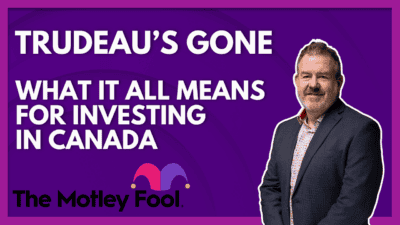The chief economists at many of Canada’s biggest banks aren’t any more optimistic for 2016 than they were during 2015, when the TSX declined by roughly 13%. The biggest factors aren’t new. These include depressed oil prices, a weak currency, and crumbling fiscal budgets in multiple provinces, especially Alberta.
How likely is it that these negatives will persist into the new year?
Oil will rebound … but when?
OPEC recently released its latest world oil outlook and, as can be expected, it’s not entirely upbeat. With vast amounts of oversupply coming from both the U.S. and OPEC itself, the price of oil has slid over 60% from its highs roughly 18 months ago.
This has crushed the Canadian economy, where the energy sector contributes about 25% of GDP. Stocks of major producers such as Encana Corporation (TSX:ECA)(NYSE:ECA) and Cenovus Energy Inc. (TSX:CVE)(NYSE:CVE) are down over 50%.
Still, there’s reason for hope.
While OPEC doesn’t predict $100 a barrel oil for many decades, it does expect oil prices to rise by an average of about $5 per year, reaching $80 per barrel by 2020. From the latest closing price, that represents a gain of over 100% in just four years. Most of this has to do with a rationalization of oversupply.
With crude prices at 11-year lows, the world’s biggest oil and gas producers are facing their longest period of investment cuts in decades. OPEC believes $10 trillion will be necessary over the next 25 years to ensure adequate oil supplies. About $250 billion each year will have to come from non-OPEC countries.
With a significant amount of the private industry facing severe financial constraints, a continued unprecedented decline in investments is more likely than higher supply. While supply should sort itself out over the next few years, whether or not the markets can adjust in 2016 if far less certain.
The loonie almost certainly won’t rebound
While not as dependent as many other countries, Canada still has a resource-linked currency. When oil falls, the Canadian dollar nearly always follows suit. Unfortunately, its impact has only gotten worse in recent years. Oil’s share of Canada’s total exports reached 19% in 2013, up significantly from just 6% a decade ago. This shift helped the loonie experience its longest and deepest downturn in 2015 since becoming a free-floating currency in 1970. Ouch.
Surely, Canada will attempt to diversify its economy in future years. This process, however, will take just that–years. Investors have no reason to believe there will be a quick fix in 2016, especially with the U.S. starting to raise rates. With Canada’s key interest rates on the way down, this policy divergence will only help to weaken an already battered currency.
Low oil and a weak currency are starting to impact the government
When the economy is weak, modern governments typically try to mitigate the impact through higher spending or lower taxes. In Canada’s weakest province, Alberta, the government may have limited options.
According to the Fraser Institute, Alberta’s debt-to-GDP ratio is set to skyrocket. While the region has previously only borrowed to pay for infrastructure projects, it will now have to borrow to pay for basic operating expenses due to low oil prices. “More spending on debt-servicing costs invariably means that fewer resources are available for public priorities,” said the Fraser Institute.
The longer oil prices and the loonie remain depressed, the costlier it will become.






